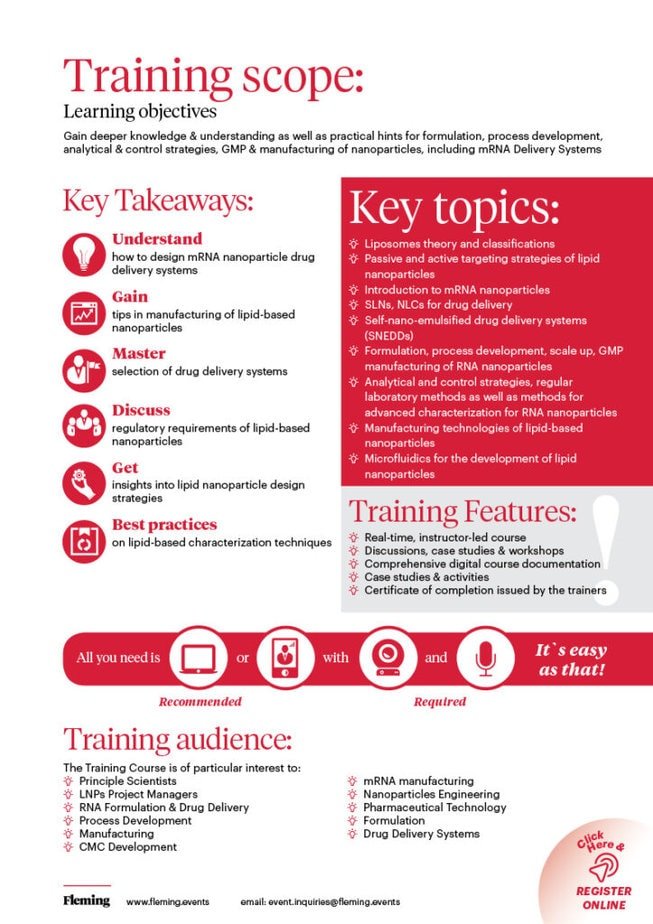Course description
Over the past few decades, lipid-based drug delivery, in particular, has experienced significant growth. Several lipid nanoparticle medications are already delivering better clinical results. Now that lipidic drug delivery systems can be designed to be highly responsive in vivo, they have advanced beyond being simple, inert drug carriers.
Liposomes and solid lipid nanoparticles are the most versatile and sophisticated with major advantages over other nanoparticulate drug delivery system as they offer effective drug loading, increased blood circulation due to steric stabilization. The FDA approval of several LNP products demonstrates their great applicability in several areas such as cardiovascular disease, neurodegenerative disease, diabetes, cancer and inflammation.
On the other hand self-nanoemulsifying drug delivery systems (SNEDDS) have become progressively popular due to their capacity to enhance solubility and permeability of drug substances for oral delivery applications. Their clinical and commercial applicability has led to the development of several marketed products.
After the successful development of lipid nanoparticles (LNPs) comprising messenger RNA (mRNA) for vaccination against Covid-19, the interest in mRNA and nanoparticle systems for various therapeutic applications has surged tremendously.
As delivery systems, currently LNPs, which are manufactured by a specific protocol with a defined mixture of four lipids are center of attention. However, there are several other nanoparticle formats which have demonstrated to be promising as delivery systems for RNA and other drugs.
Here, concepts for nanoparticle engineering with focus on lipids and polymers are presented, for tailoring of the delivers system according to type of (RNA) cargo, application route and the intended therapeutic intervention.
An important hurdle in developing nanomedicines is scaling up the synthesis of the particles to meet Good Manufacturing Practice standards required for moving the materials to the clinic.
An overview over strategies for manufacturing from early R&D to late clinical stage is given. A number for characterization techinques of the systems are also presented inlcuding modern formulation methodologies and scale-up approaches to overcome manufacturing limitations.







